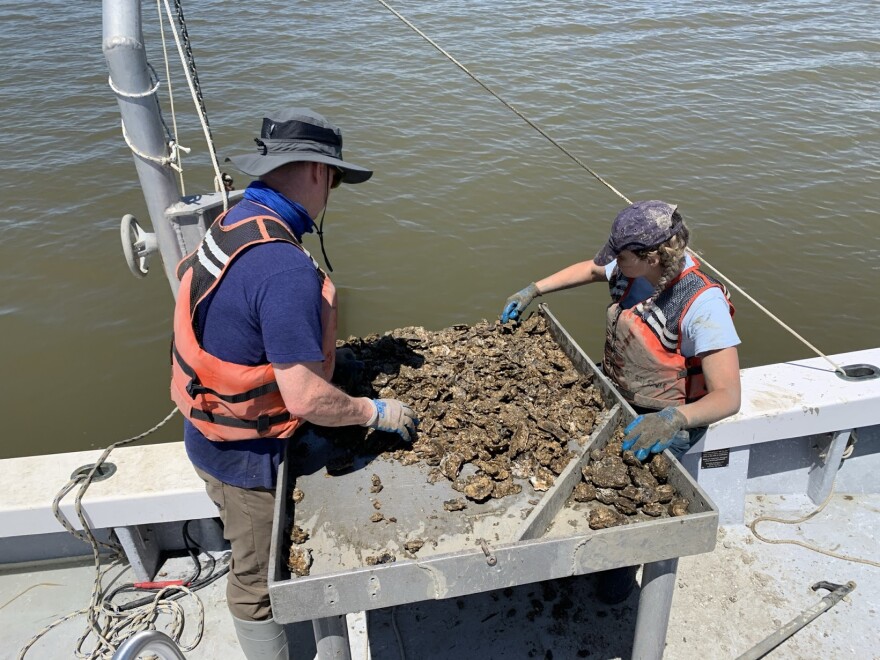Virginia’s thriving oyster farming industry means the shellfish can be eaten year-round. But wild oysters in the Chesapeake Bay region remain in a struggle to survive. Now, scientists at the Virginia Institute of Marine Science have discovered the oysters are evolving to resist a deadly parasite variant outbreak that began 35 years ago.
It began with old preserved samples of a parasite called perkinsus. First recorded here in 1949, it causes a disease known as Dermo, which slows the ability of oysters to reproduce and can be fatal. But during the mid-1980s Dermo exploded, killing about 70% of wild oysters for decades.
“This archive of many, many years of glass microscope slides of oysters that were infected with perkinsus that we could evaluate to try to reconstruct this story of what happened with the parasite and its changes,” says Ryan Carnegie is a research professor at the Institute of Marine Science.
He said the parasite thrived in drought conditions during the 80’s, but persisted over the years. Scientists wanted to know why. They looked at thousands of tissue samples collected from oysters in the Chesapeake Bay, South Carolina, and New Jersey between 1960 and 2018.
“The parasite fundamentally changed in the 1980’s. It looks different. It infects a different part of the oyster’s body,” explains Carnegie.
As it turns out the Dermo variant was a response to another parasite called MSX. And, during the past 35 years, wild oysters are slowly becoming more resistant to both parasites.
“They’re figuring out how to live with it and we’re seeing that in the recovery of oyster numbers,” he says.
Carnegie says oyster sanctuaries are a key management tool to giving the animals time to develop resistance.
This report, provided by Virginia Public Radio, was made possible with support from the Virginia Education Association.

